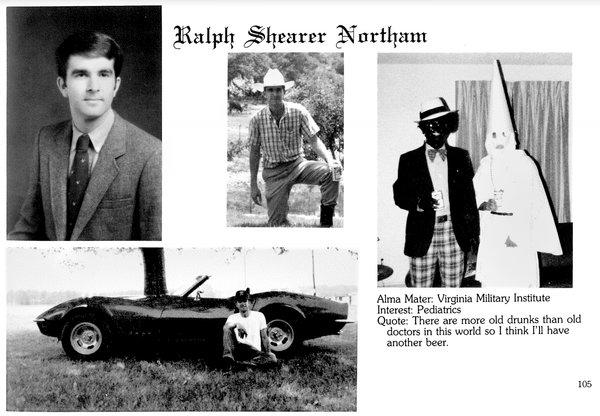 |
|
This is Ralph Northam’s page in his 1984 Eastern Virginia Medical School yearbook. (Credit: VCU Capitol News Service, Flickr CC 2.0)
|
Over the weekend, New York Times reporter John Eligon reflected on the controversy surrounding the disturbing photographs discovered on Virginia Governor Ralph Northam's medical school yearbook page. Some of those who have spoken up in defense of the governor on charges of racism include friends who grew up with him in Orancock, VA. During the 1970s, Northam attended a high school there that was fully integrated, split evenly between black and white students.
“'He is the last person on earth that would be racist,' one of Mr. Northam’s white childhood friends, Harry Mears, told Eligon when he visited Onancock recently. 'We have just as many black friends together as we do white friends.'” Elogin observes:
Mr. Northam’s defenders are channeling a tried and true myth: the belief that proximity to blackness immunizes white people from having attitudes that are rooted in racism or doing racist things.
In other words, they’re offering, on his behalf, the “some of my best friends are black” defense, which has so often been relied on by those facing accusations of racism that it has become shorthand for weak denials of bigotry — a punch line about the absence of thoughtfulness and rigor in our conversations about racism. ...
"Living among and interacting with people of different racial and ethnic backgrounds, scholars tell us, is supposed to help us understand one another better and bridge racial divides," Elogin writes, but it's not a guarantee. Northam's friends talked with pride about not seeing color in their community. The trouble with that kind of color-blindness is that meaningful conversations about race and racism often don't happen.
Absent deep, honest conversations about race with their black friends, white people can be left with superficial relationships and without a real understanding of how race plays out in a black person’s daily life. “Having black acquaintances and having black friends is different,” said Nick Adams, a television writer who is black and the author of the book “Making Friends With Black People.”
But sometimes it’s the relationships that white people have with black friends that can lead them astray. They can be lulled into a false sense of familiarity that might have them pushing boundaries better left untouched.
“Know the line,” Michael Harriot wrote in a semisatirical article in The Root that offered seven rules for white people with black friends. “While you might come from a long line of habitual line steppers, please know that there are some thresholds you cannot cross.”
Read more of Elogin's article at The New York Times »
Image credit for drawing on hompage: Richie Pope, NYT